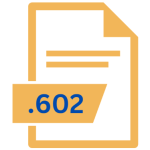.OMFL File Extension

Open Multiple Files File List
| Developer | Vovsoft |
| Popularity | |
| Category | Text Files |
| Format | .OMFL |
| Cross Platform | Update Soon |
What is an OMFL file?
The OMFL file extension, standing for Open Multiple Files File List, is a specialized file format used to store lists of files that can be opened or processed together.
This format is particularly useful in scenarios where batch processing or the collective handling of multiple files is required.
By creating an OMFL file, users can streamline workflows, ensuring that a set of files can be efficiently managed as a single entity.
More Information.
The OMFL file format was designed to facilitate batch operations in software that handles large sets of data or media files. For example, in video editing software, an OMFL file might be used to list all the video clips, audio files, and images that are part of a project.
In data analysis, OMFL files can list datasets or input files that need to be processed in a single run. Over time, the use of OMFL files has expanded, offering a versatile solution for managing multiple files across various domains.
Origin Of This File.
The OMFL file format originated from the need to simplify the process of handling multiple files in various applications.
Instead of manually opening or processing files one by one, the OMFL format allows users to group multiple file paths into a single file list.
This concept was particularly embraced in fields like data analysis, multimedia editing, and software development, where batch processing can significantly improve efficiency.
File Structure Technical Specification.
An OMFL (Open Multiple Files File List) file is a simple, plain text file designed for broad compatibility and ease of use. It primarily contains a list of file paths, each on a separate line, representing individual files.
These paths can be absolute, detailing the entire directory structure, or relative, based on the OMFL file’s location.
The structure of an OMFL file is intentionally minimalist, allowing for easy editing, creation, and parsing by both users and software.
Typically encoded in UTF-8 to support diverse character sets, OMFL files are versatile and can manage paths to any file type, from documents to media files.
Despite its simplicity, the OMFL file’s effectiveness lies in its ability to group and manage multiple files through their paths.
It’s crucial to note that it only contains references to files, not the files themselves. Hence, any changes to the actual files or their locations necessitate an update in the OMFL file to maintain accuracy.
How to Convert the File?
To convert an OMFL (Open Multiple Files File List) file, you typically want to transform the list of file paths it contains into another format.
This can be useful for integrating with other systems, data analysis, or simply for better organization and readability. Here’s a step-by-step guide on how to convert an OMFL file to various commonly used formats.
1. Converting OMFL to CSV (Comma-Separated Values):
Objective: To create a CSV file where each line corresponds to a file path from the OMFL file.
Read the OMFL File:
- Open the OMFL file in a text editor or script to read its contents.
- Ensure you handle any encoding specifics (like UTF-8) if the file paths contain special or non-English characters.
Format the Data for CSV:
- Organize the file paths so that each path is on a new line.
- If additional data is associated with each file path and needs to be in the CSV, format each line as file_path,additional,data.
Create the CSV File:
- You can use a spreadsheet program like Excel or Google Sheets: paste the data in, and save/export it as a CSV.
- Or, write a simple script (e.g., in Python or Bash) to read the OMFL file and write the contents to a new file with a .csv extension.
2. Converting OMFL to JSON (JavaScript Object Notation):
Objective: To convert the list of file paths into a JSON array or object, depending on your needs.
Read the OMFL File:
- Similar to the CSV conversion, start by reading the file paths from the OMFL file.
Format the Data for JSON:
- Decide on the structure of the JSON. Will each file path be an item in an array, or will it be a key-value pair in an object?
Create the JSON File:
- Manually format the file paths as a JSON array or object, or use a script to automate this.
- Most programming languages have libraries for generating JSON from native data structures (like Python’s json module).
3. Converting OMFL to an Excel File:
Objective: To create an Excel file where each file path is listed in its own row, possibly with additional related data in adjacent columns.
Read the OMFL File:
- Open and read the contents of the OMFL file.
Format the Data for Excel:
- Organize the file paths and any additional data into a format that’s compatible with Excel. You might structure this similarly to the CSV format.
Create the Excel File:
- You can manually copy the data into Excel and then save it as an Excel file.
- Or, use a scripting language with a library that supports writing to Excel files (like Python’s pandas or openpyxl).
Advantages And Disadvantages.
The primary advantage of OMFL files is the convenience they offer in managing multiple files. They enable users to group, open, or process batches of files as a single entity, saving time and reducing the potential for error in manual handling.
There are some limitations. Since OMFL files only contain paths to the actual files, if the files are moved, renamed, or deleted, the OMFL file’s references will break, leading to errors.
There’s a dependency on the software being used to understand and process OMFL files correctly.
How to Open OMFL?
Open In Windows
Viewing the File:
- Simply use a text editor like Notepad or Notepad++.
- Right-click the OMFL file, choose “Open with,” and select your preferred text editor.
Processing the File:
- For batch operations, you might use PowerShell or a batch script to read and process each file path.
- Custom applications designed to understand and utilize OMFL files can also be used.
Open In Linux
Viewing the File:
- Any text editor like
gedit,nano, orvimcan be used. - Use terminal commands like
cat,less, ormoreto view the content directly in the terminal.
Processing the File:
- Bash scripts are commonly used for automating batch operations on the file paths listed in an OMFL file.
- Tools like
xargscan be particularly useful for processing each line in the OMFL file.
Open In MAC
Viewing the File:
- TextEdit can open OMFL files for a quick view.
- More advanced text editors like Atom, Sublime, or VSCode can also be used for more features.
Processing the File:
- Automator or AppleScript can be used for batch processing.
- Terminal commands and scripts (similar to Linux) are also applicable in macOS’s Unix-based environment.
Open In Android
Viewing the File:
- Use a file manager app to locate the OMFL file, and open it with a text viewer or editor app.
- Apps like QuickEdit or similar can be used for viewing and editing.
Processing the File:
- Specific apps capable of understanding OMFL file structure might be needed.
- Automation apps might handle batch operations if they can parse the OMFL structure.
Open In IOS
Viewing the File:
- Use the Files app to locate the OMFL file and preview it.
- Text editor apps like Textastic can be used for more advanced viewing and editing.
Processing the File:
- Similar to Android, iOS would require specific apps that can interpret and process the content of OMFL files.
- Shortcuts app might be used for some level of automation or batch processing.
Open in Others
Viewing the File:
- Most systems support basic text viewing. Any text editor that can read plain text files can be used to view OMFL files.
Processing the File:
- Depending on the system, custom scripts, programs, or applications might be required to process the file paths listed in an OMFL file.
- The key is that the software or script needs to understand how to parse each line (file path) and perform the desired operation on it.













